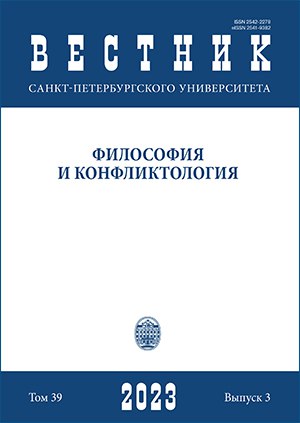Blasphemy and Violence during the Russian Revolution and the Early Years of the Soviet Union
DOI:
https://doi.org/10.21638/spbu17.2023.314Аннотация
В статье анализируются случаи богохульства, имевшие место как во время Русской революции, так и в более поздний период. Дебаты о богохульстве в революционной России изначально были связаны с политической системой и церковной структурой империи Романовых. Одним из возможных объяснений этой связки является политический дискурс «победившей революции», согласно которому революционные потрясения привели к формированию современного, прогрессивного и секулярного общества. Реконструкция дебатов о богохульстве, да и о святотатстве, не вписывается в это повествование. Советское государство использовало риторику, которая воспринималась населением в качестве кощунственной, и проводило мероприятия, воспринимаемые как богохульные, для продвижения своей программы модернизации, перераспределения материальных ресурсов, делегитимизации имперских институтов и нейтрализации политических оппонентов. Насилие было здесь постоянным спутником. Оно принимало форму репрессий при изъятии церковных ценностей и литургических сосудов, которые почитались верующими, и специальных акций по «вскрытию мощей», при которых почитаемые святыни изымались или уничтожались. Насилие также проявилось в физических столкновениях между представителями советской власти и верующими, сопротивлявшимися вскрытию мощей и использованию литургических сосудов вне богослужения, а также противодействовавших изъятию церковных ценностей. Наконец, форма символического насилия была обнаружена в том, как верующих заставляли присутствовать на демонстрации мощей/святынь в общественном выставочном зале или при фотографии «разоблачений многовекового обмана». В исследовании особое внимание уделяется фольклору об изъятии церковного имущества, разрушении церквей, вскрытии мощей, сохранившему народную интерпретацию мероприятий властей.
Ключевые слова:
богохульство, насилие, история РПЦ, российская революция, конфискация церковного имущества, почитание реликвий, вскрытие мощей, церковный фольклор
Скачивания
Библиографические ссылки
References
Загрузки
Опубликован
Как цитировать
Выпуск
Раздел
Лицензия
Статьи журнала «Вестник Санкт-Петербургского университета. Философия и конфликтология» находятся в открытом доступе и распространяются в соответствии с условиями Лицензионного Договора с Санкт-Петербургским государственным университетом, который бесплатно предоставляет авторам неограниченное распространение и самостоятельное архивирование.






